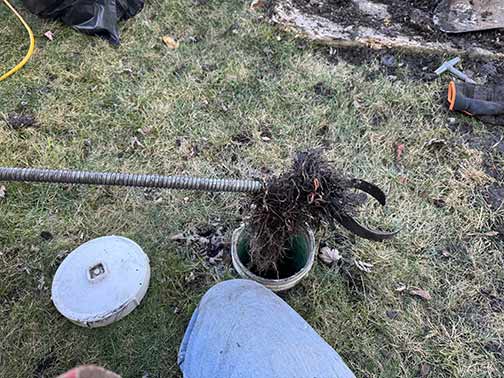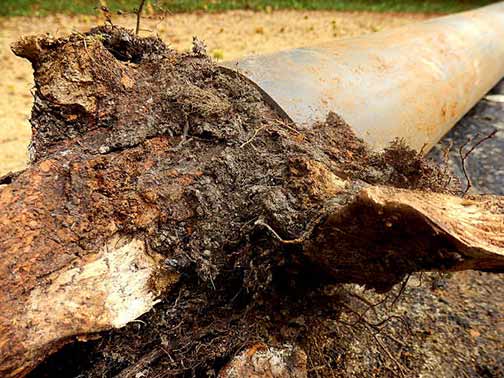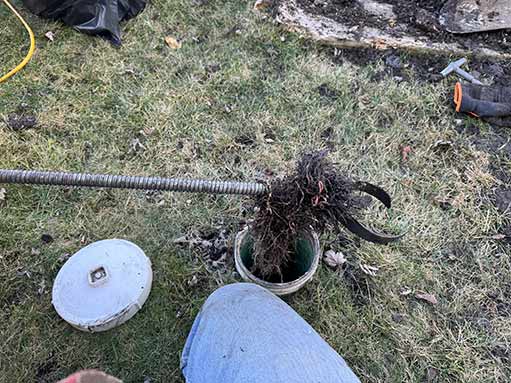If you’re a homeowner in Illinois facing this common issue, you’ve come to the right place. Dealing with tree roots infiltrating your drain pipes can cause major plumbing problems, leading to clogs, backups, and even pipe damage. In this article, we’ll provide you with practical solutions to effectively remove tree roots from your drain pipes and prevent further issues. Whether you’re in Chicago, Springfield, or any other city in Illinois, these tips will help you maintain a healthy plumbing system.
Understanding the Problem
Before we dive into the methods of sewer tree root removal, it’s essential to understand why and how tree roots invade drain pipes. Trees rely on water and nutrients, and drain pipes provide an attractive source for them. Tree roots are capable of seeking out small cracks or openings in your pipes, and over time, they can grow inside, causing blockages and damaging the plumbing system.
Signs of Tree Root Invasion
Identifying the signs of tree root invasion early on can save you from significant plumbing headaches. Keep an eye out for the following indicators:
- Slow drains: If you notice your sinks, bathtub, or toilet draining slowly, it could be a sign that tree roots are obstructing the flow.
- Unpleasant odors: Foul smells coming from your drains or sewage backups are clear indications of tree root intrusion.
- Gurgling sounds: Strange gurgling or bubbling noises when using your plumbing fixtures suggest that there’s an issue with your drain pipes.
- Water backups: If water regularly backs up into your sinks, showers, or toilets, it’s likely due to tree root blockages.
Methods for Removing Tree Roots
Now that you’re aware of the problem, let’s explore effective methods to get rid of those stubborn tree roots:
1. Sewer Line Rodding
One of the most common methods for removing tree roots from drain pipes is by using a sewer rodding machine. This process involves inserting a flexible, rotating cable into the pipe to break up and remove the roots. This method is highly effective, especially for smaller root intrusions. In most cases you will need to call a local plumber to perform this service.
2. Hydro Jetting
Hydro jetting is a powerful and eco-friendly technique that utilizes high-pressure water to clear out tree roots and other obstructions. A specialized nozzle sprays water at high velocity, thoroughly scouring the drain pipes and stripping away the roots. Hydro jetting is particularly useful for larger root masses that may be harder to remove with mechanical methods. Unless you know what you are doing and can rent or borrow hydro jetting equipment, it is highly advisable to contact a professional plumber for this service.
3. Chemical Root Killers
Chemical root killers can be an option for less severe root invasions. These root-killing products contain herbicides that are poured into the drain and left to work their magic. The chemicals usually take some time to break down the roots, so patience is required. It’s important to follow the instructions carefully and use these products responsibly.
4. Tree Removal
In some cases, the most effective solution is to remove or relocate the tree causing the problem. If you have a tree located close to your drain pipes, its roots are likely to continue infiltrating, no matter how many times you clear them out. Consult with a certified arborist or tree removal expert to assess the situation and make an informed decision.

One of the most common methods for removing tree roots from drain pipes is by using a sewer rodding machine.
Preventive Measures
While removing tree roots from your drain pipes is essential, it’s equally important to prevent their future invasion. Here are some preventive measures you can take:
- Regular inspections: Schedule regular professional inspections of your plumbing system to identify any potential root intrusion issues before they become major problems.
- Root barriers: Install physical or chemical root barriers near your drain pipes to prevent tree roots from reaching the plumbing system. These barriers redirect the roots away from the pipes or discourage their growth.
- Proper tree selection and placement: If you’re planning to plant trees near your property, choose species with non-invasive root systems and plant them at a safe distance from your drain pipes.
- Tree maintenance: Regularly maintain your trees by pruning their roots and branches. This helps control their growth and reduces the risk of root infiltration.
- Professional landscaping: Consult a professional landscaper to design your outdoor space in a way that minimizes the potential for root intrusion into your drain pipes.
Dealing with tree roots in your drain pipes can be a stressful and challenging situation for homeowners in Illinois. However, with the right knowledge and tools, you can effectively remove these roots and prevent future issues. Remember to consider the severity of the problem and consult with professionals if needed. By taking preventive measures, regularly maintaining your plumbing system, and being aware of the signs of root intrusion, you can keep your drain pipes clear and your plumbing system in optimal condition.
If you reside in the Chicagoland area and need assistance with removing roots from your pipes, contact us below!


